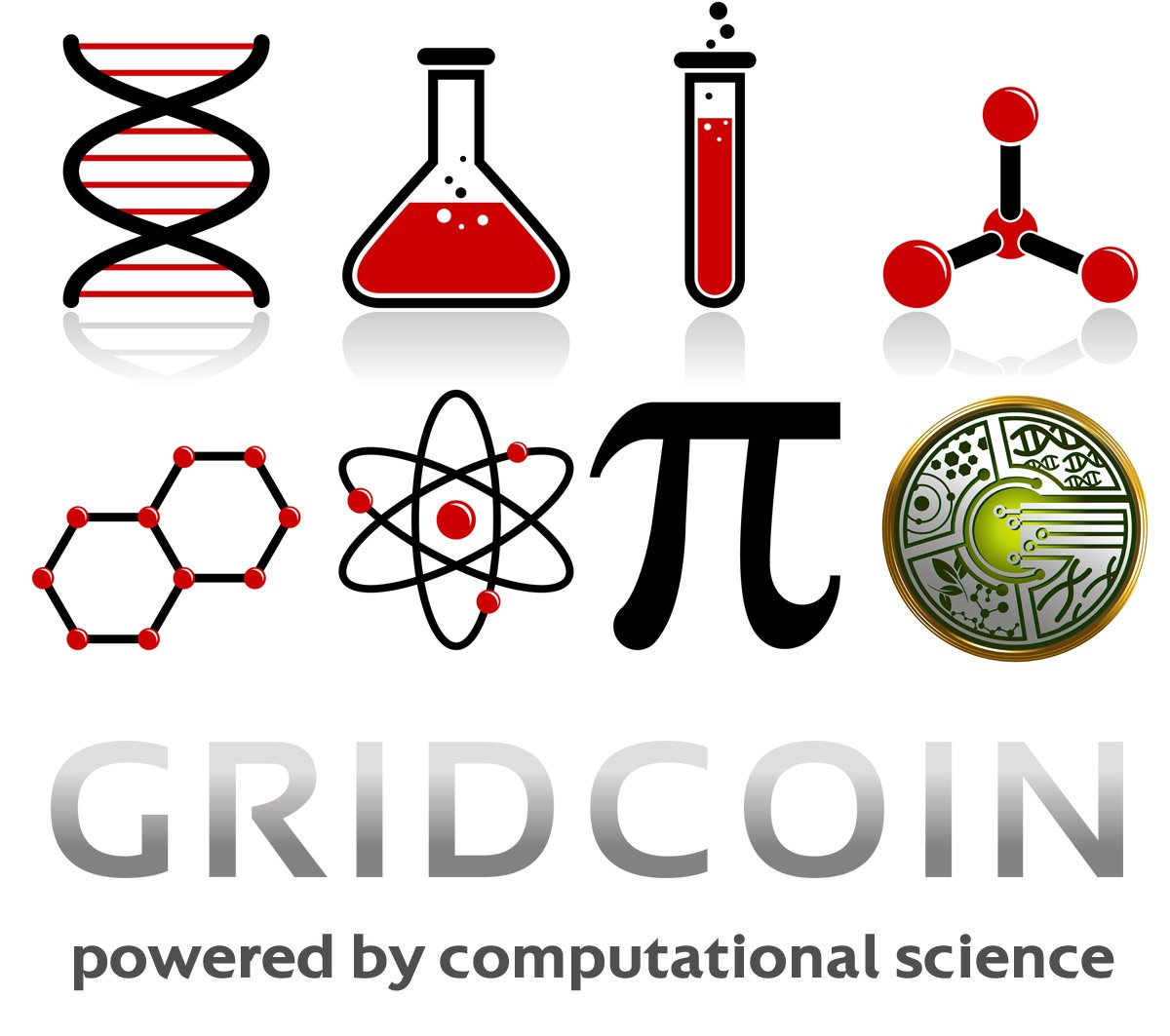We live in the world which has unlocked many scientific secrets and achieved amazing engineering feats. But with many years of rapid scientific progress now behind us, one very important fact has emerged: the more we learn about the universe, the more it appears to be based on mathematical laws. There is a new era of science emerging right in front of us - the era of computational science, where apparently everything can be calculated.
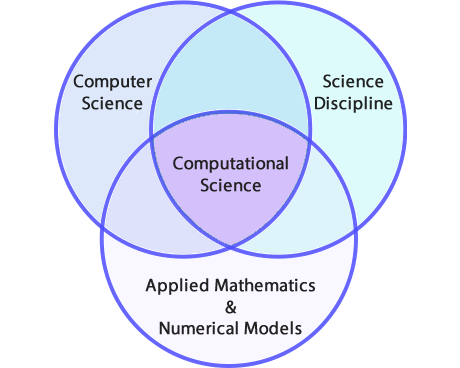
That's good news - it means we could certainly learn much more about the universe and the world around us in the near future. That's also bad news - we don't have enough computing power to do so. More and more scientific projects across the world are stalled - due to lack of computing power. Faced with the same problem 18 years ago, some smart guys over at the University of Berkeley said: Well, let's split our large computing tasks into small pieces and distribute them over the Internet. Perhaps people will compute them for free? People did and thus SETI@home was born (and became globally popular). Few years later, it was expanded and it became the BOINC network which included many different scientific projects from all across the world. And thus volunteer distributed computing was born.
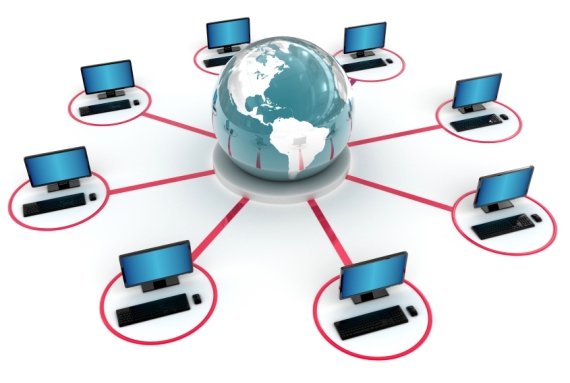
Distributed computing: there's plenty of computing power in the world, the problem is how to harness it.
But the problem remained. Our demand for computing power is increasing very fast, while BOINC output is increasing very slow. Yes, it's true - even with Bitcoin hitting new all-time-highs and new Proof-of-Work coins appearing almost every week, established scientific projects (World Community Grid, Rosetta@home, GPUGRID) which are attempting to find cures for some major human diseases (cancer, AIDS, Malaria, Alzheimer's, Ebola, Tuberculosis, Zika) are progressing only slowly - because they cannot afford enough computing power and volunteer computing is having a hard time meeting the demand. It isn't difficult to see why - when computing for free, you still have to pay for the hardware and you still have to pay for electricity.
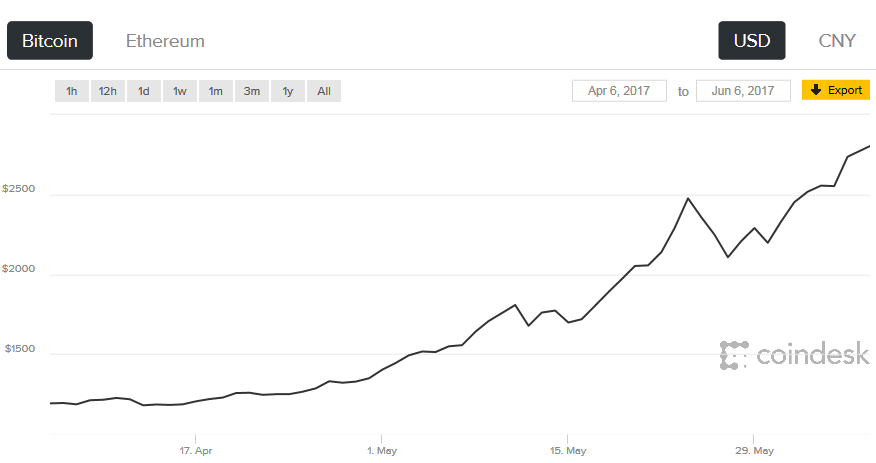
Bitcoin price in the last 60 days: from $1200 to $2800, nice exponential growth
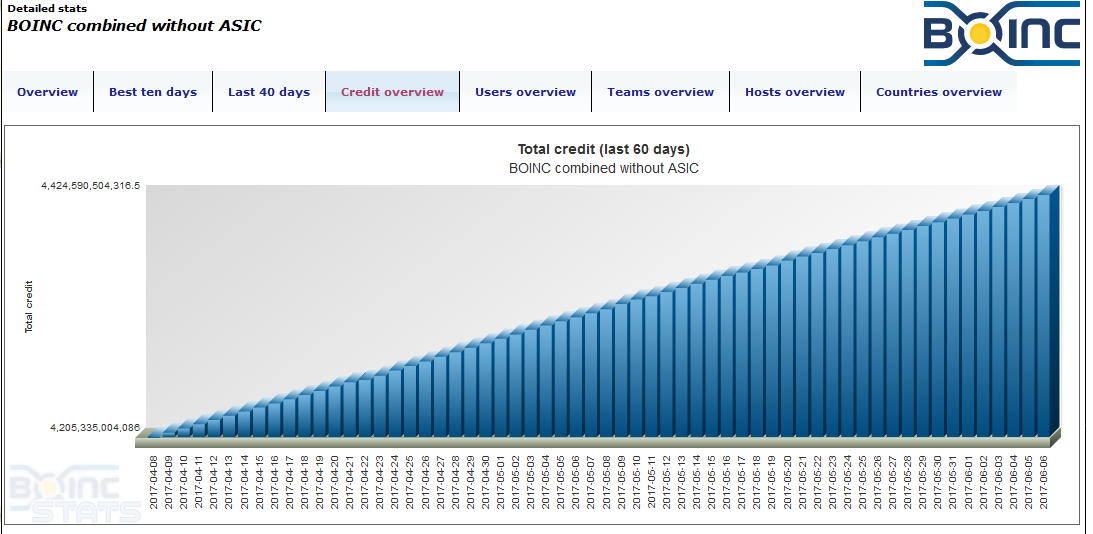
BOINC output in the last 60 days: from 4.205 trillion credits to 4.424, steady linear growth
You, the crypto-enthusiast, can turn the things around. Perhaps you are already mining some Proof-of-Work crypto on your machine? Profits are good, you are invested, don't wanna switch? Spare only a core or two for BOINC and volunteer science. Want to contribute more? Devote both your CPU and GPU to BOINC and join Gridcoin, a currency minted by BOINC computations and computational science. Gridcoin currently has the marketcap of $22 million, with one Gridcoin worth approximately 5 cents. Even at that price, it's already possible to turn a slight profit, running only BOINC, computing only for science and mining only Gridcoin. Only a few years ago, such an idea would have been dismissed as utopian science fiction.
Now, imagine one Gridcoin worth 50 cents. Thousands of new crunchers would join up and BOINC would experience the exponential growth it needs to catch up with the computing demands of modern science. Imagine one Gridcoin worth 100x more or $5. Welcome to the era of computational science. It's hard to even imagine today the level of scientific progress achievable with such a large computing network, it would start to look a lot like Ray Kurzweil's Singularity. And that's not an outlandish idea - even at that price ($5), Gridcoin's marketcap would be $2.2 billion, placed only fifth on the list of most valuable cryptos today.
The University of Geneva's Professor Francois Grey, Computing for Clean Water, World Community Grid
What would you do if you had a lot more computing power? Like 100x more? Or even 1000x more? The analogy I would give, it's a bit like Galileo, if you asked him 'what will you see through the telescope', before he looked.
Youtube link: How the Computing for Clean Water project came to World Community Grid
The University of Washington, Dr. David Baker (Rosetta@home) talks about protein folding in this NOVA documentary titled "The Origami Revolution" (from 20:30)
"Protein origami is the future of drug development" (Youtube link)
Harvard University, Dr. Alán Aspuru-Guzik, Clean Energy Project, World Community Grid
If I were to have say a hundred times more volunteers, we could turn the project into the ‘Molecular Space Project’ and we could undertake a vast cataloguing of a sample of a diverse set of molecules in chemical space to search for molecules with extreme properties for a variety of applications that could range from energy to technology and even health.
https://www.inverse.com/article/6592-supercomputer-boinc-update
"Billions and Billions of Molecules" (Youtube link). Dr. Alán Aspuru-Guzik talks about distributed computing and World Community Grid (from 17:30)
You end up with three million molecules. And there you go, how to compute them? So that's when we started to harness some of the compute power out there. Computers anywhere can help screen polymers by participating in The Clean Energy Project.
Conclusion
Today, we have three cryptocurrencies worth over $10 billion: Bitcoin, Ethereum, Ripple. Yet, what's changed? Cryptos still have crappy reputation. Ordinary people still think that's just another bubble and fail to see any groundbreaking benefits. Hundreds of megawatt-hours are still spent every day on Proof-of-Work, a wasteful concept which is very difficult to explain to anyone outside of the crypto world. Everyone's still concerned about government clampdowns. But who would dare to clamp down on the network which is on the verge of discovering a cure for Zika? Gridcoin can change the world in a way that all people can relate to - through science and scientific progress.
